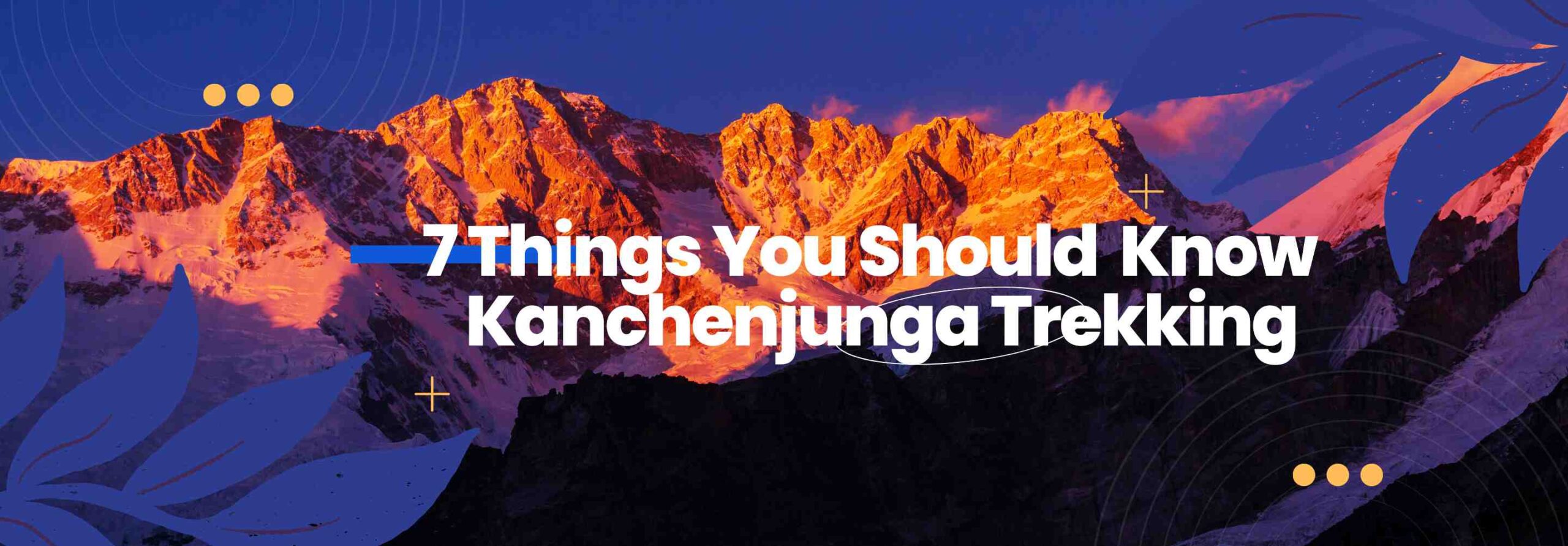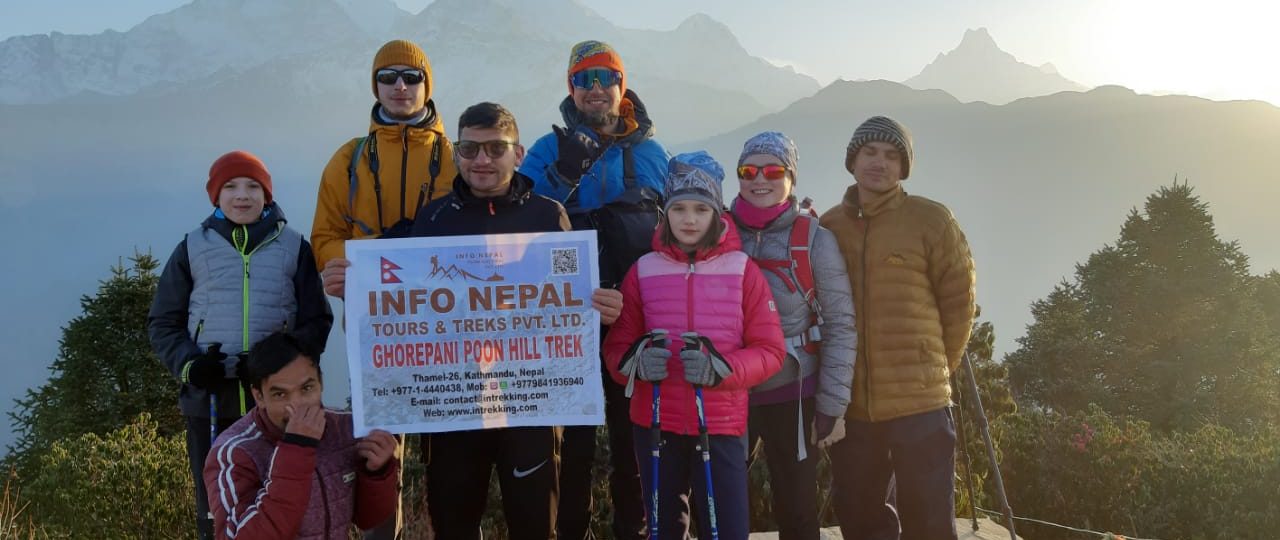
 Written By: Rajesh Neupane
Written By: Rajesh Neupane
7 Things You Should Know About Kanchenjunga Trekking
- 7 Things You Should Know About Kanchenjunga Trekking
- 1. Best Time For Kanchenjunga Trekking
- 2. Kanchenjunga Trekking Permit
- 3. Cost of Kanchenjunga Trekking
- 4. Kanchenjunga Trekking Difficulty
- 5. Food and Accommodation on Kanchenjunga Trekking
- 6. Kanchenjunga Trekking Itinerary
- 7. Packing List for Kanchenjunga Trekking
- Final Thoughts
Enquiry Form
There is no experience like trekking to the majestic Kanchenjunga region in eastern Nepal. Trekking to the base camps of Kanchenjunga, the third-highest mountain on Earth at 8,586 meters, is one of the most amazing yet difficult experiences in the Himalayas.
Prior to starting this adventure, there’s a lot to know about everything from obtaining specific trekking permits to getting ready for high elevations and basic teahouse amenities. We’ll go over 7 things you should know about Kanchenjunga Trekking that every trekker should know before beginning their Kanchenjunga journey.
Prepare yourself for breathtaking vistas of glaciers, traversing difficult mountain passes, and seeing a culturally varied area that few outsiders ever see. You will be ready to go on this remote hiking journey if you have the right information and skills.
7 Things You Should Know About Kanchenjunga Trekking
1. Best Time For Kanchenjunga Trekking
The Kanchenjunga Trek is a strenuous trek that begins at low levels close to sea level and ends at a height of more than 5,000 meters. It can be challenging to choose the ideal season for pleasant weather and vistas due to the significant elevation fluctuations along the climb.
However, the majority of trekkers agree that the best time for Kanchenjunga trek is October and November in autumn or April and May in the spring.
The following are some benefits of trekking Kanchenjunga during these ideal seasons:
- You’ll have amazing views of the huge mountains like Kanchenjunga (8,586m), Kangbachen, and Jannu Peak without too many clouds obscuring them.
- Temperatures are mild, not extremely hot or cold.
- Rainfall is low, so trails are drier and less slippery with fewer landslide risks.
- In spring, the forests and meadows are lush and bloom with colourful flowers.
- The trail doesn’t get overcrowded even in peak season since it’s so remote.
On the other hand, trekking in winter (December to March) or monsoon season (June to September) is not recommended:
- Heavy snows in winter can block high passes like Sele Le.
- Many teahouses at higher elevations shut down for winter.
- The monsoon brings heavy rains that make trails muddy, slippery, and prone to landslides between places like Ghunsa and Pangpema.
Thus, if you want the traditional Kanchenjunga Trek experience which offers manageable challenges, breathtaking scenery, and cozy teahouse lodging stick to the autumn and spring trekking seasons. But if you’re an experienced trekker looking for more adventure, the winter and summer treks offer a higher level of difficulty.
2. Kanchenjunga Trekking Permit
To trek in the Kanchenjunga region, you need to obtain two different permits which will cost a total of $65 USD per person.
Kanchenjunga Conservation Area Permit
This permit costs $25 USD per person. You can get this permit once you reach the village of Ghunsa on the trek – no need to apply for it beforehand or submit any photos.
Restricted Area Entry Permit
This permit is $20 USD per week or $40 USD for two weeks per person. However, you must apply for and purchase this permit in Kathmandu before starting your Kanchenjunga trek.
To get it, you’ll need to submit an application with details like your itinerary and insurance information through a registered local trekking agency, but you don’t need to provide photos.
Most trekkers need the Restricted Area Entry Permit for two weeks to complete the full Kanchenjunga Circuit Trek, so it ends up costing $40 USD.
If you’re only doing the Kanchenjunga North or South Base Camp treks, you can get away with the one-week $20 USD permit instead.
One important requirement is that to obtain the Restricted Area Entry Permit, you must have a minimum group size of two trekkers – you can’t get this permit for solo trekking. You’ll also need a passport valid for at least six more months.
3. Cost of Kanchenjunga Trekking
The Kanchenjunga Trek is generally more expensive compared to other popular treks in Nepal like the Annapurna Circuit or Everest Base Camp. There are a few key reasons why the costs tend to be higher:
First, you are required to hire a licensed guide to accompany you on the Kanchenjunga Trek as it passes through restricted areas. Having a mandatory guide adds significant costs.
Secondly, obtaining the necessary trekking permits for the restricted Kanchenjunga region is more expensive than other areas. You need both a Kanchenjunga Conservation Area permit and a Restricted Area permit.
Additionally, reaching the starting point of the trek requires taking domestic flights to remote airstrips, which drives up transportation costs.
The Kanchenjunga Trek also tends to have a higher number of trekking days compared to other routes, as you are trekking through very isolated Himalayan terrain. More days on the trail means more expenses for accommodation and meals.
When you factor in costs like the guide, permits, flights, accommodation, meals, and porter fees if using porters, the overall price for the full Kanchenjunga Circuit Trek will generally range from around $2,000 USD to $3,500 USD per person.
While it is one of the more expensive treks in Nepal, many feel the incredible mountain scenery, pristine wilderness, and fascinating ethnic culture you experience along the way making it well worth the investment. Just be prepared for a significant hit to your trekking budget.
4. Kanchenjunga Trekking Difficulty
The Kanchenjunga Trek is considered a challenging high-altitude trek due to several factors:
- Long Distance: Covering around 220km, it is one of Nepal’s longest treks, requiring 6-8 hours of walking per day on rugged trails.
- High Altitude: The trek reaches 5,143m at Pangpema, with unpredictable weather and risk of altitude sickness above 2,500m.
- Basic Accommodation: With few teahouses, expect basic lodging and limited food options like dal bhat.
- Difficult Terrain: The trail is narrow, rocky, and risky near rivers, with few bridges over streams.
- Permits Required: Solo trekkers cannot obtain permits – a licensed guide and a minimum group of two are mandatory.
- Poor Communication: Around 80% of areas lack network coverage, making communication difficult.
Despite the challenges, proper preparation, fitness, and a positive mindset allow even beginners to complete this spectacular but strenuous trek through remote eastern Nepal.
5. Food and Accommodation on Kanchenjunga Trekking
As the Kanchenjunga trekking route is still developing compared to more established tea house treks, the accommodation and food situation is quite basic.
For accommodation, you’ll find decent but simple teahouses along the trail. At higher elevations in remote villages like Pang Pema and Ramche, there may only be one or two places to stay. Don’t expect attached bathrooms – you’ll likely have to use a shared bathroom and take bucket showers.
When it comes to food, the menu is limited and repetitive at most teahouses serving typical dal bhat, thukpa, momos, etc. You may get bored eating similar dishes day after day. There are few shops or restaurants, so it’s a good idea to carry snacks like chocolates and energy bars.
Food costs are also quite high due to the remote location. Simple items can be surprisingly expensive – for example, a bottle of Coke may cost the equivalent of $9-10 USD in some places! Fresh meat is available occasionally but pricey.
You may get opportunities to try unique local foods too, like nyak milk (female yak milk) which costs around $3 USD per cup. Or you could purchase a whole chicken for $20+ USD to have the teahouse cook it for your group.
So in general, be prepared for basic accommodation, repetitive basic meals, and high food costs due to the isolated location. Bringing snacks and having reasonable expectations about amenities will help make your Kanchenjunga trek more enjoyable.
6. Kanchenjunga Trekking Itinerary
There are three main trekking route options to explore the Kanchenjunga region:
Kanchenjunga Circuit Trek
This is the longest and most challenging route, taking you to both the North and South Base Camps of Mt. Kanchenjunga. It normally takes around 24 days to accomplish.
The full circuit trek can be done in either a clockwise or anti-clockwise direction, though clockwise is recommended as it allows better acclimatization and provides superior views of the higher North Base Camp at 5,143m compared to the South at 4,610m.
Kanchenjunga North Base Camp Trek
As the name suggests, this option takes you only to the North Base Camp while skipping the South Base Camp and avoiding the strenuous Sele La pass crossing. It’s shorter than the full circuit but still a lengthy trek.
Kanchenjunga South Base Camp Trek
This is the shortest Kanchenjunga trek itinerary, taking you just to the South Base Camp area while bypassing the North Base Camp side as well as high passes like Sele La, Mirgin La and Sinon La.
For most trekkers, the full Kanchenjunga Circuit provides the ultimate experience by getting up close to the massive mountain from both sides. However, it requires a significant time commitment of around 24 days. The shorter North or South Base Camp treks can satisfy those with less time available while still immersing you in the incredible Kanchenjunga landscapes.
Whichever route you choose, proper acclimatization and preparation is key for these remote, high-altitude Himalayan treks in eastern Nepal. An experienced guide is also mandatory.
7. Packing List for Kanchenjunga Trekking
|
Category |
Items |
| Clothing |
|
| Footwear |
|
| Accessories |
|
| Backpack |
|
| Sleeping |
|
| Toiletries |
|
| Documents |
|
| Miscellaneous |
|
This packing list covers the essential items across clothing, footwear, gear, accessories, and documents needed for the Kanchenjunga Trek. The remote, high-altitude nature of this trek requires warm layered clothing, proper trekking equipment like sleeping bags, and plenty of sun protection. Pack light but be prepared for changeable mountain weather conditions.
Final Thoughts
An amazing but challenging Himalayan experience, the Kanchenjunga Trek requires extensive planning and preparation. There are many details to get right, from obtaining the appropriate permits and finding a knowledgeable guide to packing the required equipment and preparing yourself mentally for basic accommodation.
This trip through one of Nepal’s most remote areas has amazing rewards, though. It’s all worthwhile because of the breathtaking vistas of Kanchenjunga’s enormous peaks, the chance to cross high mountain passes, and the unique local cultures you’ll come across.
Fit and adventurous trekkers looking for a genuine off-the-beaten-path challenge should put the Kanchenjunga Trekking on their travelling list. If you have the correct information and attitude, you’ll be ready to tackle this once-in-a-lifetime opportunity.
For inquiries or to contact us regarding trekking adventures, please reach out to us at [email protected] or +977-9841936940 (WhatsApp).